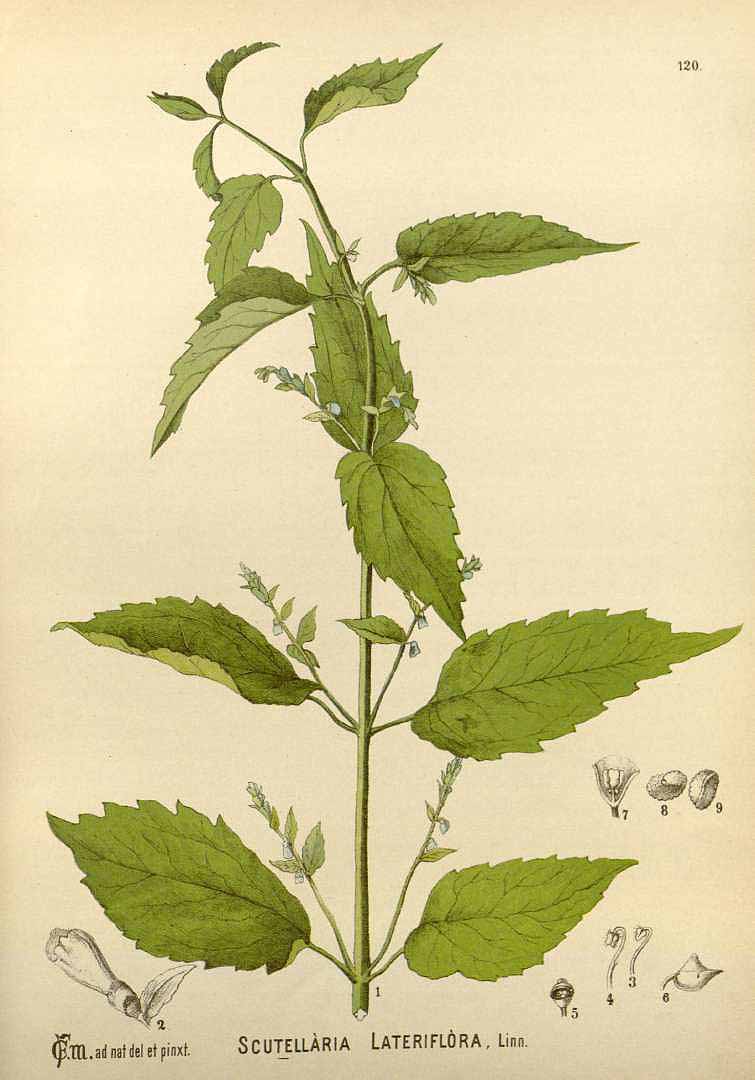“I WISH I MAY I WISH I MIGHT, GET A FULL NIGHT OF SLEEP TONIGHT”
Sleep is one of the most important aspects of maintaining your health. Unfortunately millions of people do not get enough sleep. Many factors play a role in our ability to get good sleep, from having children, to feeling stressed, good sleep is multifactorial.
As anyone knows, waking up after a good night’s sleep can often make or break your day, but sometimes it seems like there is nothing you can do to get your brain to turn off, or your muscles to stop moving so that you can actually fall asleep. The inability to fall asleep has many factors to consider, but since this is a blog about herbs, we’re going to talk about one that can help you relax and get the 8 hours you’ve been dreaming of (pun intended).Skullcap is a small perennial that grows well in Colorado, though not usually in abundance in the wild.
Its beneficial effects come from its unique effect on the nervous system. Skullcap is a nervine and a sedative herb, which means it acts directly on the nervous system to have a sedating-like effect. Now, this isn’t to the same degree as a sleeping pill would sedate you, but to those enjoying a cup of skullcap tea before bed, the body melting, brain quieting feeling you may experience could be enough to make you swear off Lunesta forever.
A unique property to skullcap is that it is quite a different plant when used as a tea versus a tincture.
In tea, skullcap is quite sedating, making it a truly excellent plant for helping one fall asleep at night.
In tincture skullcap is not sedating, but is more helpful for pain, anxiety, and tension in the body, making it more suited for daytime use.
Long-term, using skullcap tincture can help restore the nervous system back to it’s intended state of balance between tension and relaxation. This makes it helpful for conditions such as PTSD, Parkinson’s, Multiple-sclerosis, and other nerve issues.It can also be helpful for tension and cramps associated with the menstrual cycle.
MATERIA MEDICA: SKULLCAP
Latin Name: Scutelleria lateriflora
Family: Lamiaceae
Botanical Description: This branching plant grows to a height of 1 to 3 feet tall. The green leaves are arranged in opposite pairs on a square stem. The small blue-purple hooded flowers are arranged along one side of the racemes. The flowers bloom starting in mid-summer. The plant is not particularly aromatic, in contrast to most mint family plants (The Herbarium)
Part used: Aerial parts, harvest in mid-late summer when flowers are blooming
Constituents: The active constituents in skullcap include flavonoids (including baicalein, baicalin, scutellarein, wogonin), volatile oil, tannin, and resin (Holmes, 2006; Hoffman, 2003).
Energetics: cool, slightly dry, sweet and mildly bitter
Actions:
- Nervine
- sedative
- nerve trophorestorative
- anodyne
- antispasmodic
- anxiolytic
Uses:
- Helps you relax into a normal state of being when you are locked in a hypertonic tension state due to stress, overwork, or even addictions
- Helpful for PTSD
- Specifically for seizure, hysterical states, and epilepsy
- Also helpful for muscle tension and spasms
- Combines well with Milky Oats for nerve damage (adding other pain relieving herbs can help mitigate the pain associated with nerve damage as well)
- Combines well with Passionflower, Valerian, and Chamomile in tea for help sleeping at night
- Combines well with Vervain, Motherwort, Pulsatilla, and Ashwagandha in a tincture for day-time anxiety and nervous tension
Preparation and Dosage
- Tea - 1-2 tsp. in 8-10 oz hot water, allow to steep for 15-25 minutes.
- Tea form is best for full sedative effects.
- Tincture - 20-60 drops three times/day.
- Tincture if best for day-time use for pain, anxiety, and other nervous system conditions.
Safety considerations:
- Do not use during pregnancy.
- Be cautious drinking the tea during the day, it may impair the ability to drive due to its sedative effects




